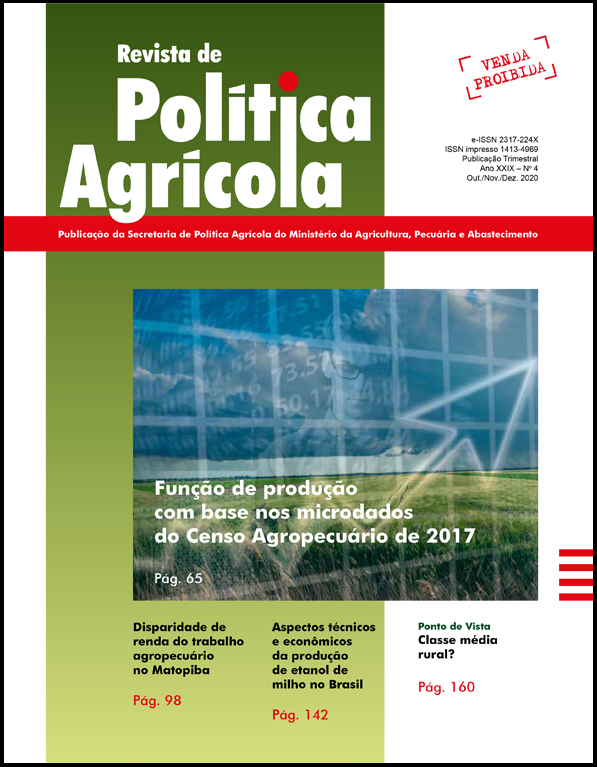Disparity income from agricultural work in Matopiba, Brazil
Keywords:
income differentials, Northeast, quantile regressionsAbstract
The wage disparities in the Brazilian labor market are substantially high and are accentuated between sectors of economic activity, regions of occupation and socioeconomic and demographic characteristics of the workforce. In view of this, this article aims to analyze the differentials of income from work in agriculture in the region comprising the States of Maranhão, Tocantins, Piauí and Bahia (hereinafter, MATOPIBA) compared to the other areas that are outside this geoeconomic region of agribusiness, which includes municipalities in three states in the Northeast and one State in the North. The use of analytical instruments based on the use of Quantile Regressions in the years 2000, 2005, 2010 and 2015 is used. The results show that the socioeconomic and demographic characteristics, as well as the region of occupation, influence the differentials of income from work at all points of the conditional distribution of wages of those employed in agriculture in this region. In addition, those employed on the agricultural frontier that comprises the MATOPIBA municipalities are better paid.Downloads
Published
2020-12-30
How to Cite
da Silva Filho, L. A., Pereira, D. do N., & Miyamoto, B. C. B. (2020). Disparity income from agricultural work in Matopiba, Brazil. Revista De Política Agrícola, 29(4), 98. Retrieved from https://rpa.sede.embrapa.br/RPA/article/view/1558
Issue
Section
Artigos Científicos


